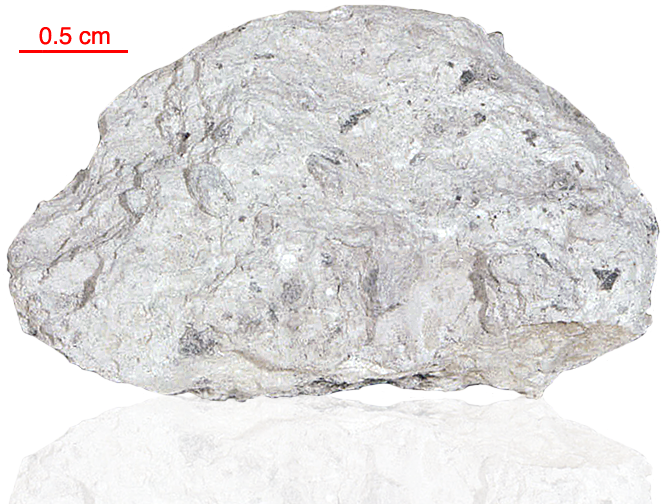
Fact sheet
67035 is a polymict white breccia, with abundant clasts. The clasts are easily separated from the chalky matrix. It should be thought of as an envelope containing pristine samples (gabbro and anorthosite) from the highland crust, packaged in a fine white powder. Our thin section shows a fragment of pristine ferroan anorthosite displaying considerable shock.
The sample weighed 245 grams before analysis and has been dated at 3.95±0.05 billion years (Ar/Ar).
Further details of this and other Apollo samples are here: http://curator.jsc.nasa.gov/lunar/
The Apollo 16 landing site was in the hilly region around Descartes crater in the lunar highlands. The landing spot was chosen to allow the astronauts to gather geologically older lunar material (Descartes Formation and the Cayley Formation) than the samples obtained in the first four landings, which were in or near lunar maria.
The mission lasted 11.1 days, with a stay on the lunar surface of 71 hours. The crew were on the lunar surface for 20.2 hours during which they traversed approximately 27 kilometers and collected approximately 96 kilograms of samples.
Apollo 16 was launched on 16 April 1972.






